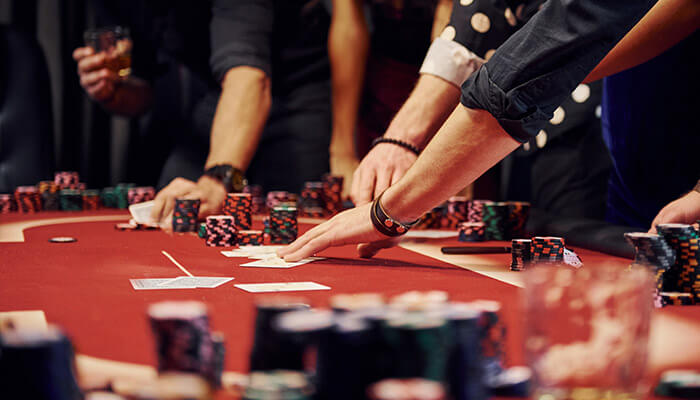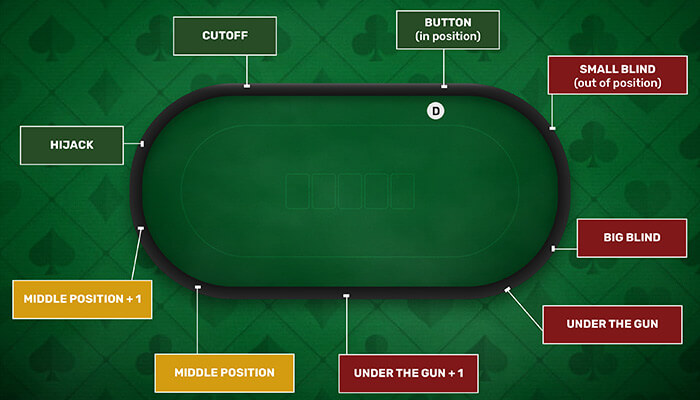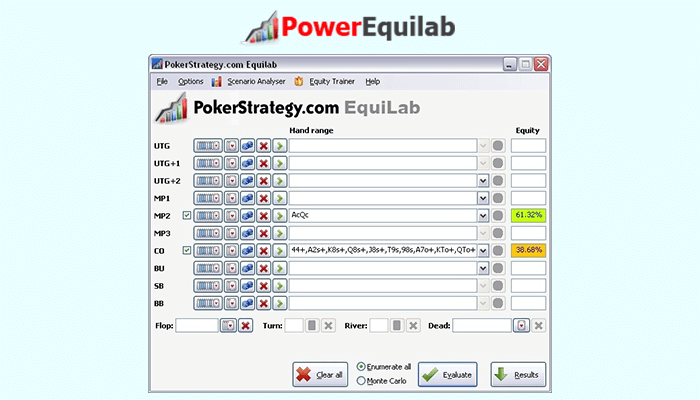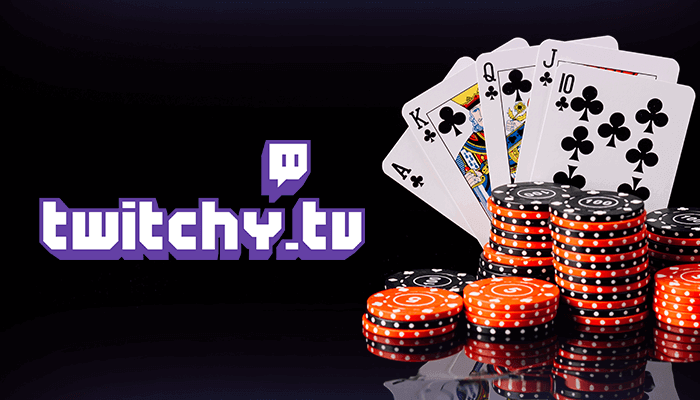Be the Next Poker Pro: Learn the Rules and Strategies

Looking to up your poker game and become the next pro? Start by mastering the rules and strategies. Our comprehensive guide will give you the tools you need to succeed at the table.
- Learn the basics of the game
- Understand the game theory and math
- Develop an advanced poker strategy
- Keep track of your progress
- Improve your skills by watching pro replays
- Know the poker jargon
Learn the basics of the game
The basic rules naturally represent the first step for you to learn to play poker. Remember that the essentials always come before finding out how to play poker like a pro.
Poker Hand Rankings
- High Card – if there is a tie, the highest card wins
- Pair – two cards of matching rank
- Two Pairs – two different pairs matching in rank.
- Three of a Kind – three cards that have the same rank
- Straight – a sequence of five non-suited cards
- Flush – five cards of the same suit in any order
- Full House – a pair and another three of a kind
- Four of a Kind – four cards of the same rank
- Straight Flush – when the player gets five cards in sequence of the same suit
- Royal Flush – a Straight Flush containing cards from 10 to A
Hand Ranking Rule
Bear in mind that if two people have the same hand, the person that has the higher cards wins.
For example, if you get a pair of 10s and your opponent gets a pair of 3s, you will win because your pair is higher.
However, if the hands have the same card ranks, the game will result in a tie, and you split the pot evenly.
How to Play Poker Hands
To play Texas Hold ’em, you will first need to bet your ante. The buy-in bet to play the round. The ante is generally a small bet, like $1 or $5.
The poker game is played in a clockwise direction with the dealer. Directly to the dealer’s left are two forced bets, which are known as the small blind and the big blind.

The Blinds
The big blind represents double the value of the small blind. It also represents the minimum bet at the table. The table stakes define the small and big blind values. Once the blinds are posted, the players are dealt two cards, one at a time, starting from the small blind position. The two cards in your hand are called the hole cards. Once they are dealt, the first betting round, the pre-flop, begins.
Pre-Flop
Now, players will have to make their first decision on whether or not to play their hand. Since the small and big blind have already committed chips to the betting pot, the first act begins with the player located on the left of the big blind position, called under the gun.
If a player wants to play their hand, they will need to match the previous amount or raise by at least double the previous bet.
Once everyone has placed their bets, the pre-flop round is over.
The Flop
The dealer will now reveal three cards, which are called the flop. The flop has three common cards that all players can use with the hole cards.
Now it’s the moment to plan what hand you want to make while keeping in mind that there are still two more cards to be revealed.
Once the flop is dealt, the post-flop betting round begins, starting with the first player to the dealer’s left.
Three Possible Decisions
- Check – pass the opening action to the next player in turn
- Raise – add an amount at least equivalent to the big blind to the betting pool (or all-in)
- Fold – forfeit this round, which it is not advisable to do when in the first position
Players that aren’t willing to call or raise a bet will be forced to fold. If everyone but one of the players fold, that player wins.
The Turn
Once the bets have been decided, the dealer reveals the next card called the turn. The post-turn betting round player actions are identical to the previous round.
The River
The next and last card revealed by the dealer is called the river. The final betting round, known as the showdown, begins. Once all wagers have been placed, the players will reveal their hands, starting with the last aggressor.
Your goal is to have the best five-card hand possible made with any combination of the seven available cards (five community cards and two hole cards), even if that implies using only one card from your hand and four cards from the board.
Understand the game theory and math
Game Theory Optimal (GTO) Poker represents the holy grail of knowing how to play poker like a pro.
Its objective is to make you almost unexploitable to your adversaries. Essentially, GTO allows you to prevent other players from taking advantage of you if you’re overusing a specific playstyle, which is one part of what makes a good poker player.
Is GTO Enough?
Mastering GTO is how to become a poker pro. Still, they advise you to deviate from it to exploit your opponent.
While GTO itself is a defensive style of play, you must combine it with exploitative play if you want to maximize your profit potential. Even though this idea mostly applies to professional players, amateurs should start using it to improve their rankings in the poker world.
Thus, a good combination of defensive and offensive actions is how to play poker like a pro.
Calculating Pot Odds
The pot odds represent the ratio between pot sizes and bet sizes you are facing.
There is $1000 in the pot, and the bet is $1000. The pot is now $2000, and you need to call $1000 to continue, so the ratio is 2000:1000, and you get 2:1 odds (33%).
Pot Odds and Risk-Reward Rates
This percent defines the risk-reward rate that controls how wide your range can be.
For instance, if you get high pot odds, you can continue the hand with a wide range. However, if the pot odds are low, you must play a lot tighter. How to play poker like a pro in relation to the pot odds is essential.
Learn to Play Poker with Hit Percentages
The approximate percentage that your draw will hit can be calculated by multiplying the number of outs you have by four during the flop or two on the turn.
For instance, if you have two diamonds in hand and two on the flop, you have a total of nine outs to hit your draws, giving you a fair chance of 18% to hit on the turn or 36% to hit by the river.
Using this shortcut in conjunction with pot odds can be a great indicator to determine if a draw is worth continuing with or not. Knowing it is what makes a good poker player.
Implied Odds
Implied odds represent the pot odds that factor in how many chips can be won on later bets.
You might not get enough pot odds on the flop to call with a draw. However, you might call and be profitable by calculating how much you can potentially win on the turn and river.
How to Play Poker Like a Pro Example
For instance, if your opponent makes a bet size of 10 big blinds into a pot of 20 big blinds, the pot now contains 30 big blinds, with ten left to call.
If you’re on a flush draw (9 outs), you have 3:1 pot odds, which are way worse than the 4.22:1 you need to make a good call.
But, because of the potential profit, you can make if your draw lands on the turn and river, you can still make this call, despite not being lucrative in isolation.
Folding Frequency Forumla
Bet / (Pot + Bet) = Folding Frequency
The formula above will give you the percentage that you should fold. Learn it by heart and practice its application to know how to play poker like a pro.
However, you should still make adjustments based on intuition and how great your hand is instead of relying only on this formula.
Further Insight
If you want to dive deeper into the math and GTO in poker, this scientific paper from Boletin de Matematicas explains why using mathematics is a crucial winning factor.
In a nutshell, GTO poker is the base strategy from which you can begin creating more advanced strategies while avoiding becoming too predictable. You have learned the first essential of how to become a poker pro.
Develop an advanced poker strategy
A more in-depth strategy is what makes a good poker player perform at the big tournament level.
Be advised that winning consistently in poker requires hard work. If you’re not willing to put in the extra effort, you won’t succeed.

Strategy Choice
Your first decision should be regarding what type of playstyle suits you best, by choosing one from the list:
- Aggressive – you bet often, open pots and put players under pressure;
- Passive – you call more often and let the opponent make the betting decisions instead;
- Loose – you play your hands, hoping to get lucky or forcing the others to fold;
- Tight – you value caution, folding often, and taking fewer risks.
You should initially decide how to play poker like a pro. However, adaptability is one of the essential poker skills. Playing the same way every turn will make you predictable.
Learn to Play Poker Position Advantages
The position is the order in which you act. In poker, acting last means that you’re in position, and if you go first, you are at a disadvantage or “out of position.”
Being an incomplete information game, knowing how to become a poker pro will depend on the position.
If the opponent always acts before you, you will make better decisions because you can collect more information.

Gather Additional Information
Gathering extra information can drastically improve your win rate because you will have better hand control when you’re in position. This is how to play poker like a pro depending on your position.
Because of this fundamental positional dynamic, you should be more defensive if you’re out of position. Conversely, you must take advantage of being in position by playing aggressively to maximize profitable opportunities.
How to Be a Pro Poker Player Based on Information
As soon as you collect the necessary information, you must adjust your strategy to maximize profit.
For instance, if you are in the cutoff and the button player aggressively three-bets, you should tighten the opening range because of the positional disadvantage.
However, if you are the small blind and the big blind folds too often, you can open a broader range than your default strategy requires. Correctly adjusting your game plan is how to become a better poker player.
How Position Plays Into It All
The position will help you win pots even if you don’t have the most reliable hand. When you and your opponent miss the flop draw, your positional advantage will bring you more wins during this round. ‘
Being in position allows you to pressure the opponents and take the pot even if you have the second-best hand. Your adversaries can even suspect you have a weak hand, and they won’t be able to do anything about it.
Use Ranges and Broad Textures
The more accurately you can identify the opponent’s range, the more complex and accurate decisions you can make.
Essentially, a range represents every hand that the opponents might logically have in a specific situation.
Considering Ranges is How to Play Poker Like a Pro
Professional players no longer think in terms of single hands. Instead, they continuously analyze the range of hands they could make or convince the adversaries they have versus the range they think the opponent has.
Your aim during a poker hand is to narrow down this range as much as possible. You do this by tracking and analyzing their play patterns. When an opponent plays his hands the same way all the time, it is possible to guess their exact hand.
How to Use Ranges
You will need to separate the range into value and bluffs because, most often, you won’t need to know their bluff hand accurately.
Instead, you should understand that they are bluffing with a particular frequency. Start the process by assessing how many hands they open from each position and determine how frequently they cold call or three-bet during pre-flop.
Ranges Become More Complex
Ranges become more polarized as the pot size increases, meaning that the value hands will be way more potent than bluffs.
As the bet gets bigger, the range will become tighter, so you must hold a steady hand to execute a value raise.
Strat Variation is How to Play Poker Like a Pro
Using various strategies to make you unexploitable is how to become a poker pro. Let’s say you always bet the pairs and check any other hands.
You do this to maintain a balanced range. This move will make you vulnerable against any opponent that knows how to play poker like a pro because they can instantly read and exploit you.
Keep Them Guessing
To avoid this situation, you must balance the range of hands you bet in every case by checking on strong hands sometimes or even betting some bluffs. This strategy will keep your opponents guessing and protect you from becoming an easy target.
Range Versus Range Equity
Analyzing which player has the best range on the board can be made by applying the range versus range equity method.
For instance, if a player opens by raising a tight range from under the game, he will have a higher proportion of strong hands than a button player that makes a cold call on a 3-3-4 flop.
Tendencies
When analyzing range advantage, always factor in the opponent’s tendencies. If you’re up against an average player who cold calls during pre-flop, you should expect to be at a disadvantage most of the time.
However, if your opponent is a loose player, that won’t be the case since this type of player usually has many weak hands in their range.
Range Adjustments
Periodically adjusting your ranges to how they are perceived will allow you to exploit your opponent’s perception.
You can achieve this trick by tightening your opening ranges, which will make them more aggressive when you land premium hands. Additionally, you will always be prepared against any adjustments they might make. Have a look at your weakest hands and expand or remove them, depending on the situation.
Adjustments Depend on Your Opponents
You must make adjustments based on your opponents, not your stakes because the math is similar no matter the final pot.
We’ve represented a button calling range purely for demonstrative purposes in the table below. The green colour represents the range of a player making a near-absolute 3-Bet. In contrast, the red colour represents the button player range.
Button Player Range Table

Here is how to play poker like a pro, using the table: from this example, build a mental picture of the opponent’s pre-flop range.
Bluff When It Makes Sense
Bluffing is an essential strategy because it can make the opponent fold even if they have a much stronger hand than you.
Your poker hands will often be junk that you might be tempted to fold before the flop or hands that you wouldn’t want to bet too many chips on. But, bluffing in such a situation could be how to become a poker pro. You might have a chance of winning with a weak hand.
How to Play Poker Like a Pro with Bluffing
To be a successful bluffer, you will have to play as if you had a premium hand.
The lie you’re trying to tell with your actions must be consistent, even if it means raising or calling a more substantial bet.
At higher levels of play, the opponents will quickly figure out that you’re bluffing if you’re throwing out a random bet hoping that they will fold and you’ll be punished.
Don’t Go All-In Yet
Of course, the strategies mentioned above are just some guidelines to get you on the right path. If you want to understand how to play poker like a pro, you should start training and adapt to all the different opponents you encounter. The more games you play, the easier it will be for you to make optimal decisions.
Before you get started playing with real money on gambling sites, we suggest you download a free play version of poker on your smartphone, such as the official WSOP app. It is essential that you first understand all the basic concepts and apply them in a real scenario, even if you’re training on a demo play version of poker.
Keep track of your progress
Alternatively, you can find several demo mode games on top-rated online casinos.
Use Data Software
To achieve success with card games, you must use software that collects historical data.
Becoming an advanced player and understanding how to play poker like a pro requires easy access to gameplay statistics. The data should include win rates, hand ranges, and board textures.
Equilab, which can be integrated with the online poker platform they are using, can teach you how to become a poker pro. After collecting enough data points, the app will analyze players’ progress and perform against different hands and betting ranges.

If you cannot set up a tracker or want to analyze your games the old-fashioned way, you can log your results in a notebook and use formulas to calculate the progress.
We recommend that you start to keep track of your progress from the very beginning because it is one of the main ways to improve and get better results over time. You can move on to real money online poker or even high roller tables when you see an improvement.
Improve your skills by watching pro replays
Learn How to Play Poker from Tournaments
Apart from being highly entertaining, watching professional tournaments or streamers that play online poker is an ideal way to learn to play poker and the ins and outs of the best players.
Twitch and Youtube Material
Analyzing pro replays can help you understand what makes a good poker player and how to become a poker pro yourself. Whenever you’re trying to learn a new aspect of the game, go to that pro player’s Twitch or YouTube channel and focus on how they use that particular technique or strategy.
If you don’t know where to start, we highly recommend you visit the Poker section on Twitch, a powerful platform where many pros stream their games. Watching streams allows you to view un-cut games in real-time and better understand how to react in certain situations.
Some Examples
For example, a place to learn the Run It Up 24/7 Twitch stream is a nonstop live poker broadcast powered by PokerStars, where professional players participate in high stakes tournaments. Another excellent resource for learning how to play poker professionally is the PokerStars YouTube channel. They post an abundance of video content, including competitions, top plays, and interviews with legends of the game.

Poker Theory Books
Studying and reading profusely about the game is what makes a good poker player. Naturally, you should look into specialized literature, such as the best Hold’em poker books for new and seasoned players.
These books will often be clearer and more informative than simple inferences from streams and videos.
Know the poker jargon
In poker, knowing the jargon is an essential factor for success. While it will not directly impact your gameplay, it will surely help you get familiar with how to play poker like a pro.
Key Terms
- Action
It represents the opportunity to make a move. While at the table, you will often hear the dealer is saying, “Your action.”
Then you will need to choose if you want to check, call, raise or fold.
- Bad Beat
It is when an underdog’s hand beats a favoured one.
This term is generally used to indicate that the winner shouldn’t have even been in the pot and that they got fortunate by catching the only card in the deck that would bring them the win.
- Bluff
Bluffing denotes when you bet or raise while holding a hand that you consider weaker than the one of your opponents, hoping to make them fold their more substantial hand.
- Button
That is a marker used to indicate the nominal dealer, which is also used to refer to the player on the button.
- Buy
Buying occurs when you bluff, hoping to buy the pot without getting called.
Betting or raising, hoping that the players between you and the button will fold, which allows you to act last in the upcoming betting rounds.
- Check-Raise
You check and then raise if a player behind you bets. Some people believe that this move is not ethical.
However, this move is permitted in most casinos, representing a vital poker strategy. Especially in low-limit Hold ’em, you will need a way to narrow the field if you’re holding the best hand.
- Community Cards
These are the cards presented face-up in the middle of the poker table and shared with all the players. They are also commonly called “the board.”
- Dealer
The dealer is the player that is theoretically dealing the cards.
When a professional or automatic dealer is present, the player dealing the cards would still need to be identified.
This is the case since the blinds and bets are to the dealer’s left. This is generally achieved by using the button that moves clockwise to the next player after a complete hand.
- Hole Cards
These are the two cards that are dealt face-down to the players.
- Kicker
The kicker’s an unpaired card used to determine the better hand from two similar ones.
If you have AK and the opponent has AQ. If the board has an Ace, you will both have a pair of aces, but you have a king kicker. The kickers are a decisive factor in Texas Hold’Em.
- No Limit
It denotes a version of Hold’Em in which a player is allowed to bet any amount of chips.
- Outs
Outs are cards that can help you win. For example – Any heart card will complete my flush, so I have nine outs.
It denotes the unique cards that only you can see. For example, “I had pocket sixes(pair of sixes), or I had King-Queen in the pocket.
- Rainbow
A rainbow occurs when the flop contains three different suits, meaning players can form no flush on the turn.
- Rank
The rank denotes the value of a card – “eight,” “queen,” “ace,” etc.
- River
It is the fifth community card put out face up, commonly known as “the fifth street.” The poker community loves making puns with the river, such as: “He drowned in the river.”
- Showdown
The last round of a poker hand, all remaining players must turn their cards and determine who has the best hand.
It usually occurs after the fourth round of betting is complete. There won’t be a showdown round if the final bet or raise isn’t called.
- Suited
A poker hand in which the two cards have the same suit. For instance: “The player got Q and 4 of spades. It was suited.”
- Tilt
When a player is on tilt, it usually means that he’s not in the best shape and plays recklessly. This often happens after you get a bad luck streak, and you become more impulsive by making aggressive decisions such as wild bluffs, calling or raising with bad hands or not folding often enough.
- Turn
The turn is the fourth community card put face up by itself, usually referred to as “the fourth street.”
Under the Gun
The player who acts first on a betting round. For example, if you are to the left of the Big Blind, you are under the gun before the flop.
- Underdog
A player or hand that isn’t statistically favored to win the pot.
Over to you
If you’ve made it this far, not only did you learn to play poker, but you already have an in-depth understanding of how to play poker like a pro.
If your ambition is to become a professional poker player, you need a progression plan. Success requires hard work and a thorough analysis of your gameplay without overextending. You can begin your journey in lower stakes live poker websites.
What Makes a Good Poker Player: Final Tips
Our recommendation is to keep a play/learning ratio of around 80/20 to get optimal results. Your mindset is also essential, and you should never let your ego overcome your ambition. Another efficient way to maximize the outcome is treating the poker games as a business by keeping a record of your profit/losses and adjusting your bankroll accordingly.
Soon enough, you may be joining the world’s wealthiest poker players out there.
References: